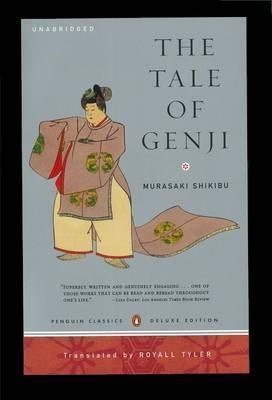Peter Boot (e)k Murasaki Shikibu(r)en Het verhaal van Genji, deel I liburuaren kritika egin du (Het verhaal van Genji, #1)
Bijzonder maar wijdlopig
4 izar
Een heel bijzonder boek. Een roman van meer dan duizend jaar oud, geschreven door een vrouw, zo'n vijftienhonderd bladzijden lang. Maar het echt bijzondere is de samenleving die in het boek wordt beschreven, die van het keizerlijk hof en de hoge adel in Japan. Staatszaken lijken er niet toe te doen. De heren aan het hof wijden zich, als ze niet achter de vrouwen aan zitten, aan kalligrafie, muziek maken, de schilderkunst. Ze dossen zich uit in prachtige gewaden. Ze schrijven brieven met gedichten om iemand het hof te maken, en ook andere gesprekken worden regelmatig gevoerd in de vorm van gedichten vol beeldspraak. Het is prachtig geschreven en je valt van de ene verbazing in de andere. Het boek is wel wijdlopig en nogal repetitief, het heeft een onafzienbare lijst personages, en het is niet zo makkelijk je in die personages te verplaatsen. Ik heb nu de eerste twee …
Een heel bijzonder boek. Een roman van meer dan duizend jaar oud, geschreven door een vrouw, zo'n vijftienhonderd bladzijden lang. Maar het echt bijzondere is de samenleving die in het boek wordt beschreven, die van het keizerlijk hof en de hoge adel in Japan. Staatszaken lijken er niet toe te doen. De heren aan het hof wijden zich, als ze niet achter de vrouwen aan zitten, aan kalligrafie, muziek maken, de schilderkunst. Ze dossen zich uit in prachtige gewaden. Ze schrijven brieven met gedichten om iemand het hof te maken, en ook andere gesprekken worden regelmatig gevoerd in de vorm van gedichten vol beeldspraak. Het is prachtig geschreven en je valt van de ene verbazing in de andere. Het boek is wel wijdlopig en nogal repetitief, het heeft een onafzienbare lijst personages, en het is niet zo makkelijk je in die personages te verplaatsen. Ik heb nu de eerste twee delen gelezen en moet een paar andere boeken lezen; of ik aan de delen 3 en 4 nog ga toekomen weet ik niet.


